Laying a gas pipeline to a private house: methods, equipment, basic requirements
The design and installation of a gas pipeline is the prerogative of specialized gas services; this work cannot be carried out independently. The owner of the gasified area is responsible for collecting the necessary documentation, obtaining permits for gas supply and putting the pipeline into operation.
Agree, for those who are faced with such a task for the first time, it is quite difficult to figure out where to start and where to turn. We suggest you sort things out in order.
We will tell you what permits and design documents need to be prepared, outline the main regulatory requirements, and the algorithm of actions when laying and connecting a gas pipeline. In addition, we will provide tips on choosing a contractor and describe how the delivery, launch and adjustment of the gas main takes place.
The content of the article:
Package of permits
A list of such documents cannot be compiled without reference to a specific building; its composition depends on many nuances. For example, when gas communications have to pass through neighbors' properties, you will have to obtain permission from their owners.
The specific list can be clarified with the design organization, but in most cases the following is required:
- Copies of ID cards of all owners.
- A certificate confirming ownership of the land and the buildings located on it.
- Certificate of inspection of the premises in which installation is planned. The inspection is carried out by a representative of the Indoor Gas Equipment Service (SVDGO).
- Gasification permit confirming the technical feasibility of carrying out these actions. The document is drawn up by the Architectural and Design Department and certified by its head.
- Technical specifications for gasification houses issued by Gorgaz.
The listed documents must be accompanied by a technical passport from the Bureau of Technical Inventory along with a scaled map of the site with all the buildings that are planned to be gasified. You will also need a diagram of all communications and the designed gas pipeline, certified by the gas service.
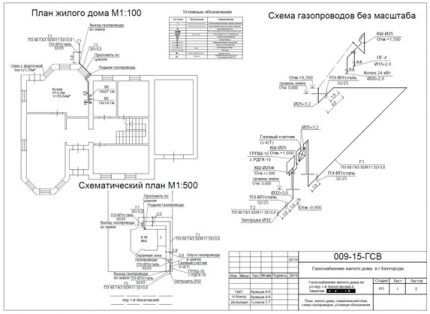
The prepared package is provided to employees of the selected design organization. Based on it, a gasification project is developed taking into account all the features of the site and the buildings located on it.
What influences the preparation of the project
If special skills are lacking, independent design is undesirable and unlikely to be feasible. In progress work on the project many factors that are known only to specialists must be taken into account.
Among them are:
- depth of groundwater, soil specifics, landscape and climatic features;
- the depth at which the central route runs;
- distance from the pipeline to the building, taking into account the depth of the outlet;
- SNiP requirements for equipment and connection points.
In addition to what is listed in the project, the method of laying the highway must be shown, gas pipeline diameter, the necessary set of instruments and fittings, materials used, features of joints and internal wiring.
Methods for arranging a gas pipeline
The main criterion for classification is working pressure in the gas pipeline. According to this characteristic, systems with low pressure, where the maximum does not exceed 5 kPa, are of interest for domestic needs.
Classification of gas pipeline systems
An important parameter is the methods of laying an individual gas pipeline from the main network transporting blue fuel to a private house/cottage.
He can be:
- underground;
- ground;
- underwater
The latter option is relevant for a gas pipeline that meets lakes, rivers or seas along its route. For a private house, the first 2 methods are used.
Depending on the location of the gas network, it can be external or internal. In practice, there is often a need to combine several routing options, since routing conditions from the main highway can vary greatly.
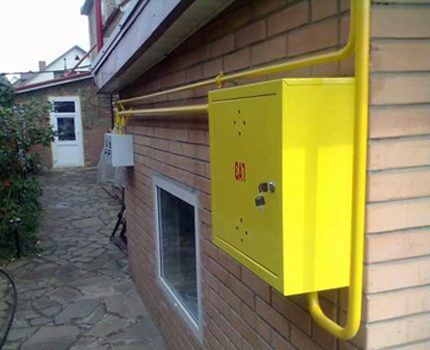
For example, the branch from the central highway, passing over the road, will be elevated. Then it goes deep into the ground and is brought to the structure in an underground version.
Underground installation method
The most labor-intensive and costly option, which requires preliminary preparation of a trench for drainage from the main highway.In this case, it is necessary to strictly adhere to the plan, which precisely determines at what depth the gas pipeline should be laid. Usually it is from 1.5-2 m.
The following factors can significantly influence the installation of communications:
- groundwater;
- seismic activity;
- abundance of corrosive elements in the soil;
- presence of obstacles and road surfaces.
It is simpler and cheaper, in terms of overall gasification costs, to use horizontal drilling. Expenses are approximately reduced by 3 times.
In addition, the technology allows:
- reduce installation time;
- bypass the road surface and existing communications;
- minimize damage to the ecology of the site.
A pilot well is drilled with a special device, which is then enlarged to the designed size. The walls are fixed with a solution, after fixing which the gas pipeline is pulled.
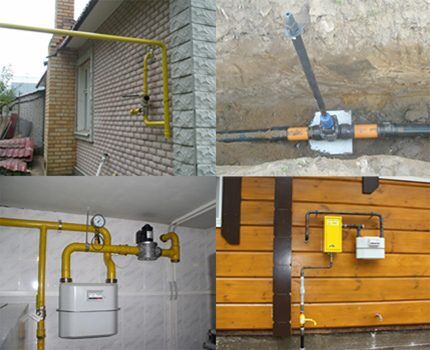
If there is a threat of electrical or mechanical damage, the pipes are protected with a steel case. This increases the cost, but makes the outlet more reliable and durable.
Laying an overhead gas pipeline
This gasification option involves installation on special supports. It is much cheaper and allows you to save up to 60% of money compared to the previous method.
A significant disadvantage is the need to protect against a number of factors:
- deforming influences;
- mechanical loads;
- corrosion damage;
- temperature changes.
The disadvantages include the possibility of arbitrary insertion into the highway, which requires regular inspection of it for structural integrity and absence of violations.
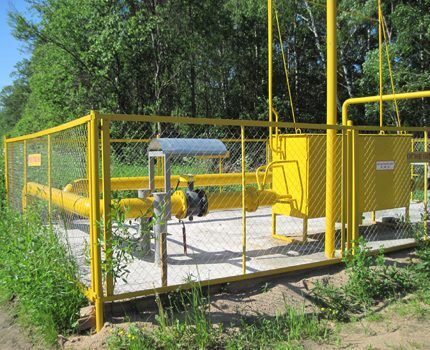
Such a threat is reduced to zero when the pipes are laid across the territory of one’s own site, access to which is as limited as possible for outsiders.
External and internal network
The internal type of installation is carried out in a specially adapted room. In this case, it is necessary to provide access to the wiring, which cannot be hidden in the walls or covered with any overlays.
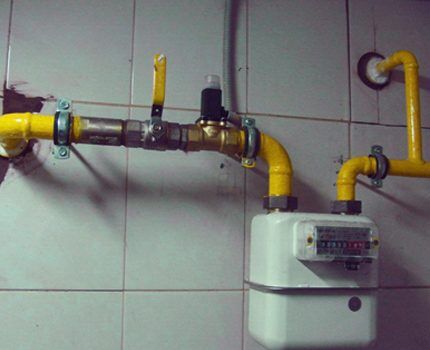
The opposite connection option involves laying pipes on special brackets that are securely fixed to the entrance.
The main requirement is maximum protection from strangers.

Protection from unauthorized access and natural influences is provided by a box with a door that is locked with a key. It is usually installed when installing a gas meter outside the building.
Which option is better to use?
Each method of laying gas pipelines has its own list of advantages and disadvantages. But when designing a gas pipeline, they are taken into account or ignored based on the conditions of the specific section where the routing will be performed.
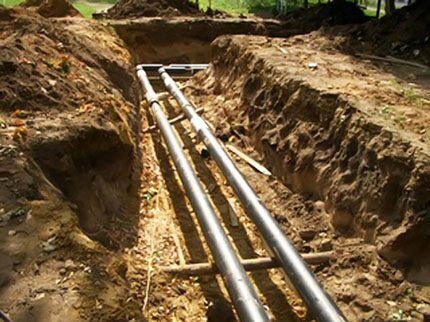
For example, the above-ground option will be preferable when the following conditions are met:
- the soil is saturated with corrosive elements that can destroy metal during use;
- the outlet passes through the territory of the neighboring site;
- The main pipe is separated from the site by road surface.
If routing is carried out under high-voltage lines, it is recommended to choose an underground option, which will provide protection from high voltage.
Gas lines made of polymers
For above-ground gasification options, it is recommended to use pipes made of low-alloy steel alloys that are resistant to external influences.
Features of plastic structures
Underground installation allows the use of polypropylene pipes, which saves on installation costs and provides a number of other advantages.
The advantages are due, first of all, to the properties of the material:
- high anti-corrosion resistance, which has a positive effect not only on installation costs, but also reduces operating costs;
- ease of processing — the material cuts well and can be welded, which simplifies installation;
- perfectly smooth internal cavity provides good throughput properties, the features of the material make it possible to avoid their reduction during use;
- lack of sensitivity to electric currents, which provides high security and eliminates the need for additional protection.
In addition to the above advantages, such pipes have a high level of flexibility, which allows them to be used for horizontal drilling.

To this should be added a small mass, which is several times lower than its steel counterpart. An important advantage is the service life of about 50 years. All this time the system operates without loss of specified characteristics.
Restrictions on the use of pipes
Despite their high resistance to external influences, such pipes cannot always be used. There are a number of restrictions under which their installation is not allowed.
These include:
- climatic conditions in which the temperature drops below 45 °C, which leads to freezing of the soil and walls of the outlet;
- use of liquefied hydrocarbons;
- high seismic activity with a magnitude of more than 7 points, when there is no possibility for ultrasonic monitoring of the integrity of seam joints.
In addition, polypropylene materials cannot be used to create overhead communications of all types, including bypass sections through natural or man-made barriers.

Their installation through tunnels, collectors, and channels is excluded. For introducing the system into the house and only steel analogues are used for wiring on it.
Additional recommendations for choosing pipes for laying a gas pipeline are given in the article - Gas pipes: a comparative review of all types of gas pipes + how to choose the best option
General requirements for gasification
Gas heating is a service with a high level of potential danger. For this reason, there is a whole set of requirements that must be met regardless of the material used and the chosen method of laying the system.
The basic rules include the following:
- Possibility of constant and free access to all connecting elements of the gas pipeline system; such nodes cannot be walled up in walls.
- No contact with flammable elements of the building, which include door frames, window frames, partitions made of flammable materials, and other similar structures.
- Wiring without bevels inside and outside the house. Strictly vertical installation is mandatory, and in the horizontal version, a slope of 2 to 5 mm is allowed with a distance of a meter to the instrument devices.
- Placement of the riser outside habitable premises. If there is no suitable interior space, it can be installed from the outside along the facade; the permissible slope cannot exceed 2 mm.
When designing the installation, it is recommended to pay particular attention to the installation of taps. Their center line in any case should be parallel to the wall.
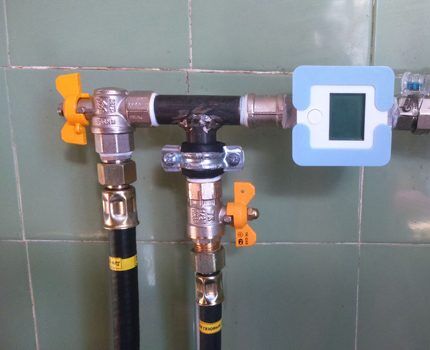
Without compliance with these and other requirements of SNiPs, the gas pipeline will not be put into operation. Additional costs for eliminating such violations are the least of the troubles. Putting into operation with such deficiencies can lead to more serious consequences.
When is the gasification project ready?
A prerequisite for the transition from the design stage to construction and installation work is the coordination of the project with the technical department of the gas service. This procedure is usually completed within 2 weeks.
Selecting a contractor and concluding a contract
After approval, the following must be attached to the project:
- estimate for the implementation of work provided for by the project;
- agreement on technical supervision;
- a report on the inspection of smoke ventilation ducts, drawn up and signed by a representative of the VDPO service.
When the entire list of necessary documents is in hand, you can proceed to the arrangement.As a rule, any design organization has a license for construction and installation work. If such a license is not available, you will have to worry about finding a contractor.
Since it is the installation organization that will be responsible for the construction and delivery of the gas pipeline, it is advisable to:
- check the license for gasification;
- view other permits;
- Ensure that employees have appropriate clearances.
Before concluding a contract, it is necessary to agree on and approve the installation deadlines, which should be recorded in the contract.
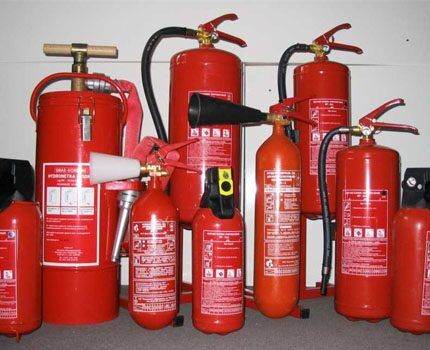
In addition to other obligations, the work agreement must include the following conditions:
- employees of the organization working at the site have a protective screen that protects the walls from heating, and all the necessary fire extinguishing equipment;
- issuing executive technical documents to the customer immediately after completing calculations for the work provided for in the project;
- the contractor’s obligation to complete the installation within the agreed time frame, in accordance with established standards and the required level of quality;
- the contractor’s obligation to promptly draw up all required executive and technical documentation.
The contractor must provide the customer with the specified documents after completing the installation work, before the commission’s visit to the site.
Commissioning of the gas pipeline
The delivery of the finished gas pipeline is carried out in the presence of a commission, which includes representatives of the contractor, the gas service and the customer himself.During the acceptance process, it is necessary to check the presence of all equipment provided for in the project, its correct installation and connection.
The commission accepts work from 2 weeks to a month. If no deficiencies are identified, the gas service representative issues a receipt for payment, which the customer pays, and a copy of the document is given to the contractor.
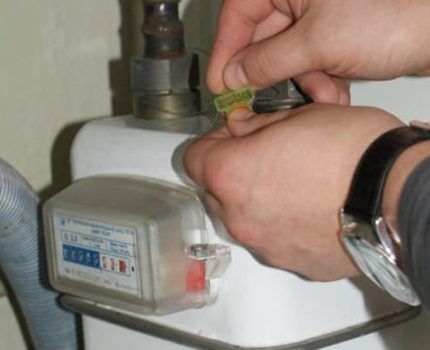
The contractor transfers all technical documentation to the gas service, where it is stored for the entire period of operation. Based on the results of the commission’s work, the gas service must seal the meter within 3 weeks, after which the system is considered ready to supply gas.
The agreement with Gorgaz regulates the maintenance of the system, for which this service will be responsible. This is the basis for the gas supply.
In addition to concluding a contract, you will need to undergo safety training. It is carried out at the company’s office or at your place of residence by a specialist with the appropriate clearance. In any case, after the briefing, the customer must confirm the completed training with a signature in the accounting log.
Launching and setting up the system
The insertion is carried out by the appropriate service, the procedure is paid, and is carried out within a predetermined time frame, when all equipment has been accepted and found functional.

After this is carried out test run, checking instrumentation and meter for leaks.
The final debugging of the equipment and launch is carried out by the equipment supplier, with which there is a service agreement:
- The system is starting up;
- it is adjusted to the optimal operating mode;
- The company representative is obliged to explain all the nuances of the operation of the equipment and the rules for its operation.
In cases where malfunctions and other problems are noticed, the launch is suspended until they are resolved.
If everything is in order and the launch was successful, a bilateral act is signed confirming the completion of the work.
Read about the prices for connecting gas to a private home and the financial costs of putting the system into operation. this article.
Conclusions and useful video on the topic
Video about collecting documents, requirements, equipment and its maintenance:
The video will tell you about the necessary documents, estimated prices, purchasing equipment, connection problems and the main stages of the process:
Using natural gas for heating is one of the most economical methods. All expenses for gasification pay off relatively quickly. The only drawback is the increased danger. But correct installation, timely maintenance and operation without violations reduce all risks to a minimum.
Do you have anything to add, or do you have questions about gasification of a private home? You can leave comments on the publication, participate in discussions and share your own experience of laying a gas pipeline. The contact form is located in the lower block.




We were faced with the following situation: we bought a house, did not know that there was once a bypass in the area and collected lists and money to include houses in the gas connection project. Our previous owners refused. And then we buy a house, and after 2 months they start laying pipes.We are trying to get into the project so that the pipe can be brought out at least to the site - to no avail! This is some kind of nightmare!
I would like to say one thing - we live in Russia! Those. It turns out that gas was laid along the entire street and those who were part of the project brought the pipes to the site or to the foundation of the house, as they wished. But they bypassed us, and they didn’t leave the pipe for the future.
We found a contractor, tried to calculate how much we needed to pay so that everything would be completed for us right away. So they counted us more than 150 thousand for just 10 meters from the road to the site. What kind of arbitrariness? We live in such a rich country, this gas is distributed to everyone left and right, but not to our own people! We were also told that it turns out we don’t have enough gas, which is why the conditions are so harsh! And the most interesting thing is that if you want to connect gas, for example, in a year, the price will increase by about 2 times. Where is the conscience of people! In a word - Russia! Maybe someone has been in a similar situation? Tell me what to do in this case? Is it stupid to give away heavenly sums? Or is there some kind of government?
Inga, you answered your own question.
As for whether there is some kind of government, you can look at the legal documents. For example, in the Decree of the Government of the Russian Federation dated December 29, 2000 N 1021 26(22):
“Payment for technological connection of gas-using equipment with a maximum gas flow rate not exceeding 15 cubic meters. meters per hour, taking into account the gas consumption of the applicant’s gas-using equipment previously connected at this connection point (for applicants intending to use gas for the purposes of entrepreneurial (commercial) activity), or 5 cubic meters.meters per hour, taking into account the gas consumption of the applicant’s gas-using equipment previously connected at this connection point (for other applicants), is set in the amount no less than 20 thousand rubles and no more than 50 thousand rubles (with value added tax if the applicant is an individual, and in other cases without value added tax) provided that the distance from the gas-using equipment to the gas distribution network of the gas distribution organization to which the application is submitted, with a design operating pressure of no more than 0, 3 MPa measured in a straight line (shortest distance), is no more than 200 meters and the measures themselves involve the construction of only gas pipelines (without the need to carry out measures for laying gas pipelines using a trenchless method and installing a gas reduction point) in accordance with the duly approved regional (interregional) gasification program for housing and communal services, industrial and other organizations, including the scheme location of gas supply facilities used to provide the population with gas.
The indicated minimum and maximum levels of fees for technological connection, starting from 2015, are annually indexed to the forecast average annual inflation rate determined by the forecast of socio-economic development of the Russian Federation for the same period for which the fee for technological connection is established.The specified fee for the technological connection of gas-using equipment does not include the costs of carrying out activities within the boundaries of a land plot owned by right of ownership or on another legal basis to an individual or legal entity.”
Inga, hello. Sorry, I didn’t understand something about “not enough gas.” If it weren’t enough, you wouldn’t be offered to drive 10 meters from the common fund. And here there is not enough gas... Is it possible to negotiate with a neighbor to cut his line? And what kind of contractor is this? Have you tried going to the supplier’s organization itself to get the technical specifications?
I have a similar story. In the completed project for supplying a gas pipeline to the house, the pipe reaches from the gas main to the nearest corner of my property, but they don’t want to extend it all the way to the house. I can fit in the required two hundred meters. They offer to lay it along the fence on supports at their own expense. And this is about forty meters. I don’t understand why they only draw to the nearest property line, and not to the house itself?
Hello. Unfortunately, these are 2 different projects - gasification of the street and the house. In this case, a distinction is made between balance sheet and operational ownership.
Hello, in the village a gas pipe was installed to the very last house. But 6 houses along this pipe cannot crash into it, they say there is not enough pressure. Question: are there any standards for calculating all possible future consumers for the specifications of this pipe. As far as I know, this is exactly how the gas pipeline was built before, even empty areas without houses were calculated so that in the future they could run into the common fund.
Hello! Please help me with advice.The low pressure pipe runs along the street, more precisely from the opposite edge, to the border of the site 3 m from the pipe.
Mosoblgaz writes in the technical specifications that it is required to lay a 3 m pipe using a trenchless method, therefore the connection does not fall into the first category and the cost of laying a 3 m pipe to the site and connection is 250 thousand rubles.
Is it legal for Mosoblgaz to require installation using a trenchless method? This is a village road, individual housing construction, without asphalt, but it is included in the cadastre. The cadastral value of this entire road is 75 thousand rubles.
Hello. As I understand it, you are embarrassed that because of this you do not fall into category 1 and, accordingly, cannot use the benefits of clause 26.22 of the Basic Provisions for Regulating Gas Prices, approved by Decree of the Government of the Russian Federation of December 29, 2000 N 1021?
Unfortunately, you will most likely have to comply. Everything here is legal, the road is on the balance sheet and if there is no other connection option, the cost of the road does not matter at all. Mosoblgaz is not obliged to calculate what is most profitable for you; geosurveys and complex engineering calculations are carried out here that do not affect the interests of third parties.
Good afternoon! We installed gas through our neighbor’s property in 2000. Now he wants us to move the pipe. He also did an examination, the pipe was laid with violations, the depth is small. He sued us, not the gas service. And I have in the demarcation act it is written that I am responsible for the above-ground gas pipeline. Should I be responsible for violations of the installation and whose gas pipeline is it? Gazprom replies that I am the owner. Is this legal if I did not register the gas pipeline running through my neighbor’s property.
Thank you!
Good afternoon. Sorry for the wait. First you need to find out on what basis the gas pipe was laid through the neighbor's property. Was the neighbor aware and did he give consent? After all, a project for gasification of the village was created. But it’s better to reach an amicable agreement with your neighbor. Maybe offer him rent.
But in any case, the neighbor, if he is not happy that a gas pipe is laid across his property, is right. The law is on his side. If he sues, it means you didn't reach an agreement.
Advice - find the original documents. Everything should be indicated in them - who is responsible, who is right, what is possible or not.